Sex Reassignment Surgery (Male to Female) in Panama
Search and Compare the Best Clinics and Doctors at the Lowest Prices for Sex Reassignment Surgery (Male to Female) in Panama
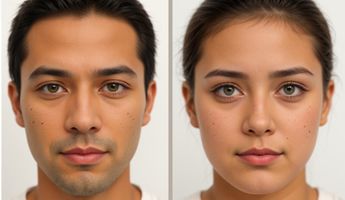
Find the best clinics for Sex Reassignment Surgery (Male to Female) in Panama
No clinics available
Thailand offers the best prices Worldwide
Price: $ 2,473

- Home
- Panama
Compare Before & After Photos of _procedure_photos.phpSex Reassignment Surgery (Male to Female)


Front view


Front view


Front view


Front view


Front view


Front view
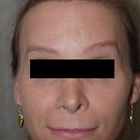
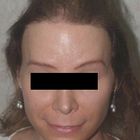
Front view


Half-side view


Front view
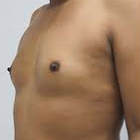

Half-side view
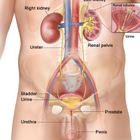
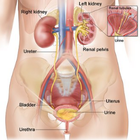
Front view
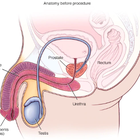
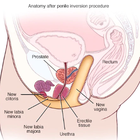
Full-side view
WHY US?
At Medijump, we're making medical easy. You can search, compare, discuss, and book your medical all in one place. We open the door to the best medical providers worldwide, saving you time and energy along the way, and it's all for FREE, no hidden fees, and no price markups guaranteed. So what are you waiting for?

Free

Best Price

Widest Selection

Risk-Free
What you need to know about Sex Reassignment Surgery (Male to Female) in Panama

Also known as Gender Reassignment or Sex Change Surgery, Sex Reassignment Surgery (SRS) involves the surgical procedures required to change a person’s sexual characteristics from one gender to the other. The procedure can be used to transition a person from Male to Female and from Female to Male. Male to Female procedure involves reshaping of male genitals to appear and function as female genitalia (including a vaginoplasty), hair removal therapy, hormone replacement, facial feminization surgery, and Breast Augmentation.
Hormone treatment is started one year prior to surgery and continues after, where estrogen helps to reshape the body’s contours and stimulates the growth of labia majora. At least one therapist will be required to assess a patient’s psychological wellbeing before the go-ahead can be given.
The decision to have a breast augmentation should be an informed one that takes into account the potential risks and side effects. You should also have realistic expectations about the results of breast implant surgery to avoid disappointment. Find out about the procedure, the recovery period and any possible complications - ask your doctor or surgeon if you are unsure about anything.
What is the cost of Sex Reassignment Surgery (Male to Female) in Panama?
One of the most common inquiries about the Sex Reassignment Surgery (Male to Female) pertains to its expense. The financial burden associated with the procedure may significantly impact one's decision to pursue it. Nonetheless, it's not easy to pinpoint the exact cost, given that numerous factors can influence it. In Panama, the total cost of the procedure may fluctuate considerably based on factors like surgeon qualification, the intricacy of the operation, and the span of hospitalization, to name a few.
It's vital to acknowledge that the Sex Reassignment Surgery (Male to Female) is not a one-off event, but entails a succession of treatments and surgeries. Typically, it includes mental health sessions, hormone treatments, and several surgical procedures, all of which add to the general cost. Expenses post-surgery, such as medication, check-up appointments, possible extra surgeries, and supplementary therapies, also require consideration. Furthermore, expenses for travel and lodging in Panama should be taken into account. For a precise cost approximation, reach out directly to the clinic.
What does a Sex Reassignment Surgery (Male to Female) Procedure Involve?
Clinically speaking, sex change operation is known as “Genitoplasty Procedure”. This type of procedure can be performed to transition an individual from female to male and from male to female.
It is very important to understand that before you undergo surgery, you will need to first transition. Gender transition is a lengthy process that requires a lot of patience and resilience. In addition, it will be of great help if you have a strong support system to back you up in times of difficulty. It’s also essential that you have a therapist to not just help you with your emotional wellbeing before and after the transition, you will also need a letter of recommendation from your therapist before your surgery.
Transitioning from male to female will involve penectomy (removal of the penis), orchiectomy (removal of testes), vaginoplasty (creation of a vagina), and feminizing genitoplasty (creation of female genitalia). During the surgery, you will be induced with a general anesthetic.
You must start hormone treatment a year prior to your surgery to help reshape your body contours and stimulate the growth of your labia majora. Hormone treatment will be continued even after your sex-change operation.
There are popular MTF sex reassignment surgery techniques which you can choose from, two of which are: sex reassignment surgery with skin graft technique - the most popular SRS procedure, vaginal depth is up to 13-15cm (5-6 in). Another is sex reassignment surgery with colon graft - suitable for people with less scrotal skin and those who prefer a lubricated vagina and is considered as the most expensive procedure.
There are other procedures that you can undergo to fully transition from male to female. These may include; breast implants, facial feminization surgery (FFS), and another procedure would be to minimize the appearance of your Adam’s apple, etc. All procedures to help one fully transition will vary on the individual’s need and of course, their budget.
Prerequisites to Surgery
- Patients must be at least 20 years old or have consent from parents / legal guardians for those between 18 and 20.
- At least 12 months of successful and continuous real-life experience living as a woman.
- At least 12 months of continuous hormonal therapy.
- Must consult with a psychiatrist in the home country and in the country where the procedure will be performed (this can be arranged in your chosen hospital in Panama).
- Physically fit for surgery.
Popular MTF Sex Reassignment Surgery (SRS) Techniques
1. SRS with Penile Skin Inversion
- Suitable for patients who do not want a vagina for sexual intercourse, particularly popular with elderly trans people. Depth is around 2-4 cm (1-2 in) and penile hair removal is required prior to surgery.
- Surgery: 2.5 hours
- Hospitalization: 4 nights
- Recovery time in Panama: 3-4 weeks
2. SRS with Scrotal Skin Graft
- Scrotal skin is used to create a vaginal depth of up to 13-15 cm (5-6 in), depending on skin quality and quantity (additional depth is possible by using groin skin). This is the most popular SRS procedure.
- Surgery: 4 hours
- Hospitalization: 6 nights
- Recovery time in Panama: 3-4 weeks
3. SRS with Sigmoid Colon by Laparoscopic Technique
- The Sigmoid colon is used to create the vagina, allowing for greater depth than what is possible with SRS with a scrotal skin graft. More suited to those with less scrotal skin or those who prefer to have a lubricated vagina, like that of a biological woman. By far the most expensive technique.
- Surgery: 6 hours
- Hospitalization: 7 nights
- Recovery time in Panama: 3-4 weeks
How Long Should I Stay in Panama for a Sex Reassignment Surgery (Male to Female) Procedure?
A lot of patients prefer having surgery overseas since it is far less expensive and most countries, like Panama, have a very high success rate in terms of plastic surgery and gender reassignment surgery.
Recovery after surgery will be a long and painful process. It will also require several follow up procedures as well as constant monitoring so you will have to stay a little bit longer at the hospital until you are ready to be discharged. Generally, allow for a minimum of 3 weeks stay in Panama after your surgery, this will allow for the removal of stitches and a few weeks of follow up visits with the surgeon.
What's the Recovery Time for Sex Reassignment Surgery (Male to Female) Procedures in Panama?
Smoking before and after the surgery is highly discouraged and avoid smoking for at least two weeks to reduce risks of non-healing.
Most people are able to return to work in about 4-6 weeks after a sex change operation. Furthermore, you can resume strenuous work and exercise after 2 months. It is vital that you strictly follow all medication instructions during your recovery period.
Keep in mind, recuperation incorporates not only physical healing but also emotional rejuvenation. The Sex Reassignment Surgery (Male to Female) implies a noteworthy modification in your way of living and acclimating to an altered body image and social identification requires patience. Mental health guidance proves to be an important element in the healing journey, offering emotional assistance and managing any mental obstacles that come up.
What sort of Aftercare is Required for Sex Reassignment Surgery (Male to Female) Procedures in Panama?
Social support is very important before and after the surgery, especially the support that comes from your family and loved ones. You have to be socially and emotionally stable before you undergo the operation. This is why it is required that you have proper counseling to help you with your emotional wellbeing. You have to prepare yourself mentally, before, during and after transition because it can be quite overwhelming and stressful.
It is also important that you maintain a regular check-up with your local doctor to monitor the progress of your healing and avoid complications.
What's the Success Rate of Sex Reassignment Surgery (Male to Female) Procedures in Panama?
The success rate for a sex change is very high nowadays, given technological advancements and the greater experience of surgeons. Gender reassignment surgery from male to female has a higher success rate than female to male; this is why more male transgender people opt for a sex change.
However, given the nature and complexities of this type of surgery, you also have to be aware of its complications, for example, there is always a possible risk of infection, severe pain, given the intrusive nature of the surgeries and the potential for blood clotting and scarring.
Possible side effects may also include a decreased sexual sensation and ability to orgasm, fistula (opening between rectum and vagina), narrowing of vagina and hair growth in the vagina from the grafted tissue and the partial death of tissue used to create the new vagina.
Are there Alternatives to Sex Reassignment Surgery (Male to Female) Procedures in Panama?
There is no alternative to a sex-change operation for those who want to fully transition their body to match their gender identity. Undergoing gender reassignment surgery will require a lot of time, energy, patience, and of course money. A vast majority of people who experience gender dysphoria never really surgically alter their appearance. Instead, they use creams and hormonal pills to alter their bodily appearance. Estrogens (female hormones) will help develop the breast, widen the hips, help lose facial hair and slightly increase voice pitch.
What Should You Expect Before and After the Procedure
Prior to even undergoing the Sex Reassignment Surgery (Male to Female), those considering this option should be aware that their health care provider will necessitate a thorough evaluation phase. This is implemented to ascertain that the individual is thoroughly prepared, both physically and mentally, for the major changes that the procedure implies. The evaluation generally includes multifaceted assessments of physical and mental health, as well as evaluating certain social circumstances. The objective of these assessments is to gauge the individual's preparedness and appropriateness for the procedure.
In this initial stage, the health care provider implements a cross-disciplinary strategy, typically engaging a collaborative team made up of endocrinologists, psychologists, and surgeons. The aim is the effective provision of required hormone therapy and mental health counseling, alongside addressing any possible health-related issues. This pre-surgery stage also serves to educate and obtain consent, meticulously discussing details such as the implications, possible outcomes, risks, and difficulties related to the Sex Reassignment Surgery (Male to Female). Once approved for surgery, patients should be ready to adhere strictly to all pre-surgery directions to lessen any potential risks and complications during the process.
Post Sex Reassignment Surgery (Male to Female), patients should gear up for a substantial recovery period. This will require dedicated wound maintenance, compliance with prescribed medicines, and following specific physical limitations to assist healing. Depending on the specific nature of the surgery, some patients might also have to adhere to a vaginal dilation plan. This plan necessitates consistent use of dilators to avoid the newly created vagina from becoming narrow during the healing period.
What are Potential Risks of Sex Reassignment Surgery (Male to Female)?
A comprehensive understanding and consideration of prospective hazards and difficulties linked to Sex Reassignment Surgery (Male to Female) is vital before proceeding. As a significant surgical operation, it inherently possesses hazards such as intolerance to anesthesia, surgical infections, hematoma or blood congregating outside the blood vessels, excessive bleeding, or suturing problems. Even with the advancements in modern surgical procedures that help minimize these risks, they cannot be entirely eradicated and, therefore, must be anticipated.
The Sex Reassignment Surgery (Male to Female) encompasses elaborate and multifaceted surgeries like vaginoplasty, which have unique inherent risks. Some of these potential hazards include the possibility of diminished sexual sensitivity, complications in urinary functions, or challenges with the dimensions of the newly formed vagina. Other complications can include issues such as vaginal stenosis, a scenario where the vagina gradually shrinks and lessens over time, or rectovaginal fistula, a rare situation where a connection forms between the rectum and vagina unintentionally. Sometimes, more corrective surgeries might be necessitated due to post-surgical complications.
Popular Procedures to Combine with SRS
- Usually performed in one operation: Orchiectomy to remove the testicles and prevent further production of testosterone, Penectomy to remove the penis and Vaginoplasty to form the female genitalia
- Breast Augmentation to create the breasts, which is usually performed at a later date.
- Facial Feminization Surgery (FFS) and Tracheal Shave to help feminize the facial features and is not necessary for many patients.
- Hair Implants, Hair Removal Therapy, and Continued Hormone Replacement Therapy.
Whilst the information presented here has been accurately sourced and verified by a medical professional for its accuracy, it is still advised to consult with your doctor before pursuing a medical treatment at one of the listed medical providers
No Time?
Tell us what you're looking for and we'll reachout to the top clinics all at once
Enquire Now

Popular Procedures in Panama
Prices Start From $69

Prices Start From $208

Prices Start From $1,945

Prices Start From $1,795

Prices Start From $889

Recommended Medical Centers in Panama for procedures similar to Sex Reassignment Surgery (Male to Female)

- Interpreter services
- Translation service
- Religious facilities
- Medical records transfer
- Medical travel insurance
- Health insurance coordination
- TV in the room
- Safe in the room
- Phone in the room
- Private rooms for patients available
Sex Reassignment Surgery (Male to Female) in and around Panama
Introduction
Situated as a transcontinental entity, the Republic of Panama straddles the geographic crossroads of Central and South America. The inception of the Panama Canal in 1914 propelled this country into an integral position as a nexus between the Caribbean Sea and the Pacific Ocean. Those who are drawn to visit this radiant country find themselves ensnared in a mesmerizing display of cerulean seas, diverse fauna, deserted islands, bountiful coffee farms, and awe-inspiring rainforests.
The Republic of Panama unites the corners of the world, bridging the two American continents as a vibrant transcontinental nation. The construction of the Panama Canal in 1914 marked a turning point, positioning the nation as a crucial crossroad - connecting the vast expanse of Caribbean waters with the Pacific. The travelers who venture into this country discover an array of rewards awaiting them. The breathtaking beauty of sparkling blue waters, a plethora of enthralling wildlife, desolate islands that evoke an air of tranquility, sprawling coffee plantations, and the awe-striking charm of lush rainforests contribute to the diverse and enticing experiences that Panama has to offer.
Over the past several years, the Republic of Panama is steadily gaining renown as a preferred medical tourism hotspot for myriad individuals across Europe and the United States. The medical professionals operating within the country receive their robust education and accreditation from the United States, thus ensuring their expertise extends to the vanguard of their respective fields. The blend of these proficient doctors and superb medical infrastructure, combined with reasonable pricing on a wide range of medical practices, contributes to Panama's appeal for healthcare needs. Whether one seeks remedial treatments or desires elective cosmetic surgery, there are an ample array of high-quality, cost-effective services available in this picturesque country.
In the recent panorama, Panama has noticed a swift surge in its recognition as a prime choice for medical tourism, attracting numerous Europeans and Americans to its shores. Professionally trained and certified in the United States, the doctors in Panama stand at the forefront of their respective medical fields. Contributing to its desirability as a medical tourism hub is the high-quality care provided by these adept medical practitioners, alongside state-of-the-art healthcare facilities. The affordability of medical procedures in Panama further heightens its appeal. From treatments aimed at correcting medical conditions to elective cosmetic surgeries, the striking beauty of Panama, coupled with its comprehensive and affordable healthcare solutions, makes it an ideal medical destination for individuals worldwide.
Popular Cities and Regions in Panama
Known as the most cosmopolitan capital within the region of Central America, Panama City opens the door to a multitude of tropical getaways while donning the hat of a bustling metropolis. Serving as a focal point for trade and immigration within the region, Panama City represents a vibrant blend of diverse cultures; a veritable melting pot where different backgrounds meet and meld.
Being the epitome of cosmopolitan magnificence in Central America, Panama City beams as the gateway to a spectrum of tropical retreats and simultaneously thrives as a bustling urban settlement. It stands as a central hotspot for regional trade and immigration practices, thereby birthing a profusion of cultures. This city, with its diverse cultural influences, serves as a sophisticated melting pot, crafting a harmonious blend of a myriad of cultures.
Some of the more popular tourist attractions are Teatro Nacional, Panamá Viejo, Donde José, and Parque Natural Metropolitano. Although the capital attracts thousands of tourists each year, the most popular destination is Bocas del Toro. Combining a laid-back Caribbean vibe with the incredible natural setting of forests, jungles, and mangrove, this seaside town is where adventure and relaxation meet. Surfing and snorkeling are extremely popular in this town. However, the real talking point is relaxing in a secluded cove which can only be reached by water taxis.
Transport in Panama
The primary international portal into Panama is the Tocumen International Airport, serving as a critical regional hub for flights moving in and out of The Caribbean, as well as North, South, and Central America. Additionally, it accommodates flights from select cities across Asia and Europe. For intra-country travel, domestic flights are the quickest mode of transport; however, the speed comes with a higher price tag.
Road travel presents a more economical alternative, with buses being the most widely used and cost-effective means of transportation across the country. Within the confines of major cities, taxis are readily available for residents and tourists alike.
Tocumen International Airport is the premier international aerial gateway into Panama. This airport stands as a regional transport hub, connecting Panama with destinations across the Caribbean, North, South, and Central America — even heralding flights from certain European and Asian cities. To journey within Panama, domestic flights offer the quickest, albeit pricier, option. For those prioritizing affordability over speed, buses provide a popular and budget-friendly choice.
Further adding to the transportation options in Panama is the accessibility of taxi services. For those traversing within the major urban areas of the country, taxi services make intra-city travel a breeze. These easily available taxis contribute significantly to the efficiency of short distance commutes.
Additionally, getting around within the key city areas in this country is seamless thanks to the taxi services. For intra-city commutes in Panama's principal urban centers, taxis stand as a thoroughly accessible choice for transportation, simplifying movement within the cityscape.
Visas in Panama
Panama allows citizens of most countries, including all EU citizens and Americans, to visit the country without a visa for 180 days. Some other countries, such as China and the Philippines, need a visa to visit the country. All visitors need to hold a passport valid for at least 6 months.
-
Citizens of over 100 countries, including all EU nations and the United States, can visit Panama without a visa for up to 180 days.
-
Nationals of countries not included in the visa-exemption list need to apply for a visa before traveling to Panama.
-
All visitors must have a valid passport with at least six months remaining validity from the date of entry.
-
Proof of onward travel may be requested upon arrival.
Weather in Panama
Situated comfortably within the tropics, Panama's climate is characterized by distinctive wet and dry seasonal variations. Spanning from mid-March through to December, the wet season tends to bring rainfall every alternate day. However, the showers are typically brief and they mainly occur during afternoon hours, but this season also tends to be quite humid. On the other hand, the dry season extends from December until March. Throughout this time frame, the likelihood of witnessing rainfall dramatically decreases, resulting in overall drier conditions.
Given its tropical location, Panama experiences two distinct seasons: the wet and the dry. Commencing in mid-March and continuing until December, the wet season brings periodic rainfall, which typically occurs in short, intense bursts during the afternoon. However, tourists should remember that humidity levels can peak during this time. Conversely, the dry season, which stretches from December through March, ushers in a period of minimal rainfall, offering a drier climate.
Additional Info
- Local Currency: The official currency is the balboa. The rate of exchange has always been tied to the US dollar. 1 USD equals 1 PAB.
- Money & Payments: ATMs are readily available in most cities and towns. Credit cards are accepted at upscale hotels and restaurants. Tipping is customary.
- Local Language: Spanish is the official language of Panama, as well as the most widely spoken. English is one of the most popular foreign languages.
- Local Culture and Religion: The main religion in Panama is Christianity. However, Buddhism, Judaism, and other religions are also practiced.
- Public Holidays: Panama celebrates Mardi Gras, Los Santos Uprising Day, Independence Day, and Christmas Day among others.
Popular Searches
- Plastic Surgery in Thailand
- Dental Implants in Thailand
- Hair Transplant in Thailand
- Breast Augmentation Thailand
- Gastric Sleeve in Thailand
- Gender Reassignment Surgery in Thailand
- Laser Hair Removal in Bangkok
- Botox in Bangkok
- Dermatology in Bangkok
- Breast Augmentation in Bangkok
- Coolsculpting in Bangkok
- Veneers in Turkey
- Hair Transplant in Turkey
- Rhinoplasty in Turkey
- Stem Cell Therapy in Mexico
- Rhinoplasty in Mexico
- Liposuction in Mexico
- Coolsculpting in Tijuana
- Rhinoplasty in Korea
- Scar Removal in Korea
- Gastric Sleeve in Turkey
- Bone Marrow Transplant in India
- Invisalign in Malaysia
- Plastic Surgery in the Dominican Republic
- Tummy Tuck in the Dominican Republic
- Plastic and Cosmetic Surgery in Poland
- Rhinoplasty in Poland
- Hair Implant in Poland
- Dental Implants in Poland
- IVF in Turkey